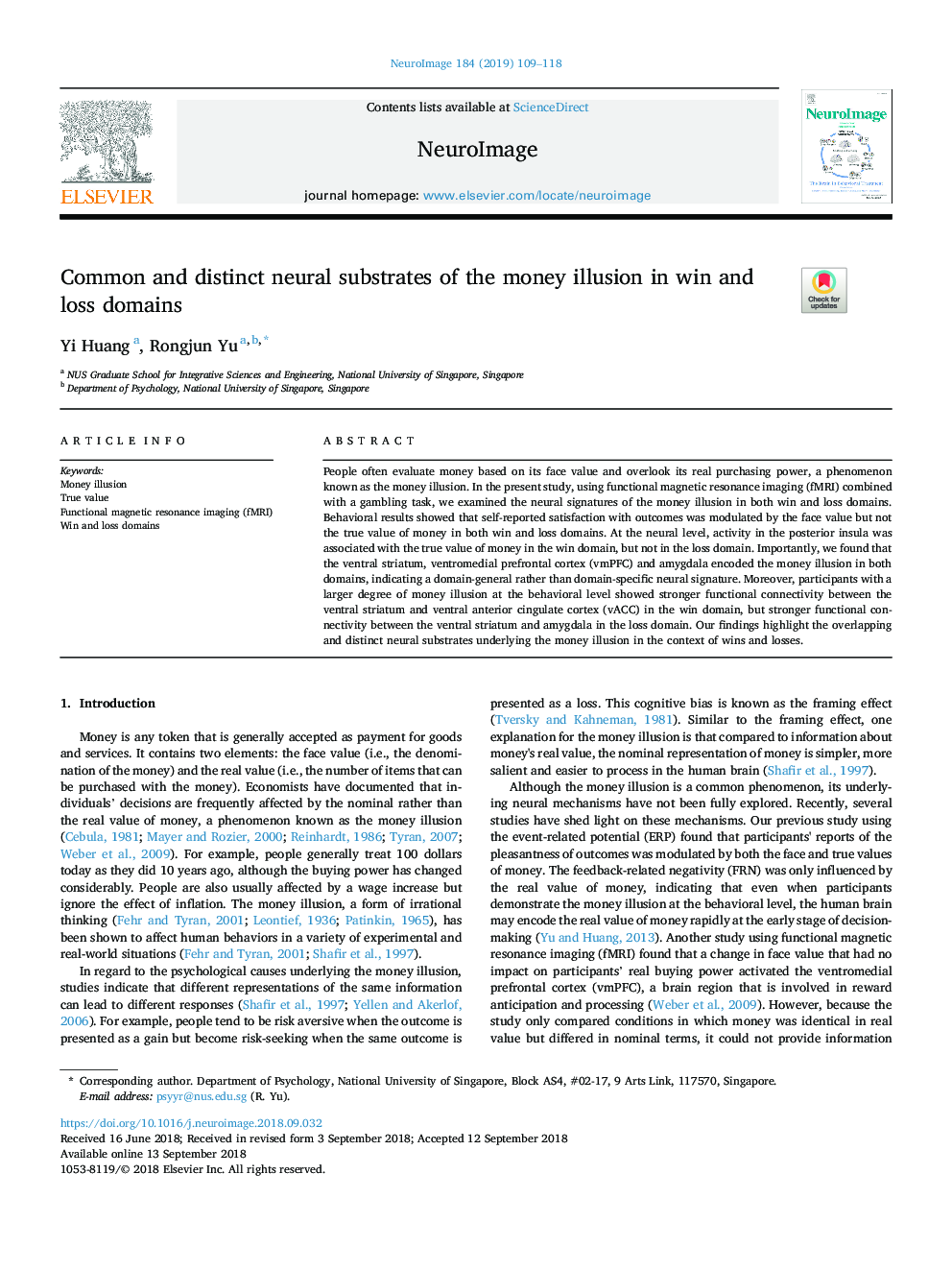| Article ID | Journal | Published Year | Pages | File Type |
|---|---|---|---|---|
| 10215539 | NeuroImage | 2019 | 10 Pages |
Abstract
People often evaluate money based on its face value and overlook its real purchasing power, a phenomenon known as the money illusion. In the present study, using functional magnetic resonance imaging (fMRI) combined with a gambling task, we examined the neural signatures of the money illusion in both win and loss domains. Behavioral results showed that self-reported satisfaction with outcomes was modulated by the face value but not the true value of money in both win and loss domains. At the neural level, activity in the posterior insula was associated with the true value of money in the win domain, but not in the loss domain. Importantly, we found that the ventral striatum, ventromedial prefrontal cortex (vmPFC) and amygdala encoded the money illusion in both domains, indicating a domain-general rather than domain-specific neural signature. Moreover, participants with a larger degree of money illusion at the behavioral level showed stronger functional connectivity between the ventral striatum and ventral anterior cingulate cortex (vACC) in the win domain, but stronger functional connectivity between the ventral striatum and amygdala in the loss domain. Our findings highlight the overlapping and distinct neural substrates underlying the money illusion in the context of wins and losses.
Related Topics
Life Sciences
Neuroscience
Cognitive Neuroscience
Authors
Yi Huang, Rongjun Yu,
